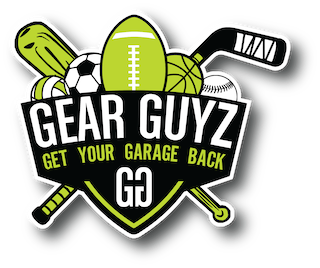Confused about stick flex or curves? Learn how to choose the best pro stock hockey stick setup in 2025 and shop rare specs at Gear Guyz.
For hockey players in 2025, few decisions matter more than choosing the right stick flex and curve pattern. These two factors determine how the puck comes off your blade, how fast you can release a shot, and how much power you can generate. The wrong flex or curve can leave your stick feeling stiff, unpredictable, or even uncomfortable, while the right setup can make your game feel effortless. At Gear Guyz, we specialize in pro stock hockey sticks—many built with rare curves and custom flexes you can’t find in stores. Here’s what to know before grabbing your next twig.
Flex refers to how much force it takes to bend a stick one inch. A retail stick marked 85 flex may vary by as much as 10 pounds, while a pro stock stick flex usually comes within plus or minus 3 pounds, making it far more consistent. The general rule is to choose a flex rating close to half your body weight in pounds, but that’s only a starting point. In 2025, more players are dropping down to softer flexes—70 or 77 instead of 85—to take advantage of quicker releases and easier loading, especially in today’s faster game. If you’re a defenseman leaning into slap shots, a stiffer flex like 95 or 102 still makes sense, but snipers and playmakers often benefit from lighter options.
Curves shape how the puck feels on your blade and how your shots behave. The P92, also known as the Ovechkin curve, remains one of the most popular retail and pro stock curves in 2025, offering an all-around mid curve perfect for passing, wrist shots, and puck control. The P28, often called the McDavid curve, continues to dominate the pro stock world with its open toe curve, making it ideal for quick snapshots and top-shelf flicks. Players who want extra puck control on the backhand often lean toward the P88, while niche custom patterns like P90TM and P28M—often only available in pro stock—are becoming more sought after than ever. Searches like “P28 vs P92” and “best hockey stick curve 2025” are spiking, reflecting how many players are debating this exact choice.
One of the biggest differences in pro stock versus retail is the availability of these rare curves and flexes. That’s why more players are searching specifically for pro stock stick curves—they want options the average player doesn’t have access to.
When choosing your setup, think about your play style. For quick release players who rely on sniping, a softer flex paired with an open toe like the P28 can make the difference between a blocked shot and a goal. For all-around forwards, a P92 in the 77–87 flex range is reliable across the board. For defensemen looking for heavy slap shots and booming clears, a 95 or 102 flex paired with a mid curve can handle the load. The beauty of pro stock sticks in 2025 is that you’re not limited to retail options—you can find the exact specs NHL and NCAA players are using and put them to work in your own game.
At Gear Guyz, we hand-inspect every pro stock stick and list curves, flexes, and grips clearly so you know exactly what you’re getting. From P28M 77 flex Jetspeeds to P92M HyperLite 2s in 87 flex, we’ve got rare builds that give you an edge without paying full retail markup. With next-day shipping and personal service, upgrading your twig has never been easier.
Check out our current pro stock stick inventory at https://thegearguyz.com/collections/sticks and find your perfect flex and curve combination before it’s gone.
Frequently Asked Questions About Flex and Curves:
What flex do most NHL players use? Most NHL players in 2025 use sticks in the 75–87 flex range, with forwards tending to drop lower for quick releases and defensemen using stiffer options like 95 or 102 flex for booming slap shots. Pro stock sticks are built to tighter tolerances, so the flex rating you see is accurate within a few pounds.
What curve is best for beginners? For newer players, the P92 curve is usually the best starting point. It’s balanced, reliable for passing and shooting, and makes puck handling easier. Once you’ve built consistency, experimenting with a P28 toe curve or a pro stock variant like P90TM can open up more shooting options.
Why do pros use softer flex sticks now? Today’s game is faster and more about quick-release shots than winding up for slap shots. That’s why more NHL forwards are dropping into the 70–77 flex range. A softer flex loads easier and gets the puck off the blade faster, especially with the popular P28 curve.
Are pro stock curves really different from retail? Yes. While retail usually sticks to common patterns like P92, P88, or P28, pro stock curves include custom versions such as P28M, P92M, or P90TM that aren’t sold in stores. These often tweak the lie, blade shape, or curve depth to match player preferences—and Gear Guyz is one of the few places you’ll actually find them for sale.
Should I buy a stiffer or softer flex stick? It depends on your style. If you rely on quick wristers and snapshots, a softer flex between 70 and 77 will help. If you take a lot of slap shots or are a bigger, stronger player, a stiffer flex like 87 to 102 will give you more power without overloading the shaft.

Leave a comment
This site is protected by hCaptcha and the hCaptcha Privacy Policy and Terms of Service apply.